QOTD: The Worst Examples of Automotive Cooperation?

Automakers are keen to pursue partnerships with one another when it means saving money via economies of scale, or when it supports an established corporate structure. Whether it’s in the form of some basic components-sharing or a more intensive joint venture, today we want to hear about the worst possible examples of automotive cooperation.
Today’s question was a suggestion from commenter ToolGuy a few weeks back on the QOTD post about awful Nineties design from Asia. He wanted to discuss the good and bad outcomes of joint ventures. We’re opening the field up to general cooperation as well, discussing the worst ones first (per standard operating procedure).
Warning, a piece of poo incoming:
The Jaguar X-Type was a great example of automaker collaboration gone horribly wrong. As a key eventual component of the Premier Automotive Group, Jaguar was subject to the whims of Ford between 1989 and 2008. Some of Ford’s orders were most beneficial to Jaguar: Vastly improved quality control and dollars invested in updated manufacturing processes. The flagship XJ in particular reaped the benefits of Ford’s ownership.
At the other end of the spectrum was the X-Type.
Circa 2000, Jaguar had an entry-level sedan-shaped hole in its lineup when compared to most every other European automaker. Ford saw an opportunity in the Mondeo, which was already popular and selling well across Europe. “Go,” Ford said, “and make this a very luxurious compact for not much money.” Jaguar was forced to comply. The X-Type went on sale for model year 2001, a year after its brother’s third-gen arrival across Europe.
Though it was successful from a sales perspective when compared to more expensive Jaguar offerings, it never met the projected figure of 100,000 sales per year. Instead, it achieved around 350,000 sales total in its run through the 2009 model year. The X-Type’s interior had an air of imitation luxury, which paired nicely with reliability issues. Engine problems, transmission failures, fluid leaks, overheating — oh my! An okay Ford ended up a fairly bad Jaguar, harming the brand’s reputation as X-Types littered BHPH lots within three or four years from new.
Off to you in the comments; let’s hear about the worst in cooperative efforts.
[Images: GM, Jaguar]

Interested in lots of cars and their various historical contexts. Started writing articles for TTAC in late 2016, when my first posts were QOTDs. From there I started a few new series like Rare Rides, Buy/Drive/Burn, Abandoned History, and most recently Rare Rides Icons. Operating from a home base in Cincinnati, Ohio, a relative auto journalist dead zone. Many of my articles are prompted by something I'll see on social media that sparks my interest and causes me to research. Finding articles and information from the early days of the internet and beyond that covers the little details lost to time: trim packages, color and wheel choices, interior fabrics. Beyond those, I'm fascinated by automotive industry experiments, both failures and successes. Lately I've taken an interest in AI, and generating "what if" type images for car models long dead. Reincarnating a modern Toyota Paseo, Lincoln Mark IX, or Isuzu Trooper through a text prompt is fun. Fun to post them on Twitter too, and watch people overreact. To that end, the social media I use most is Twitter, @CoreyLewis86. I also contribute pieces for Forbes Wheels and Forbes Home.
More by Corey Lewis
Latest Car Reviews
Read moreLatest Product Reviews
Read moreRecent Comments
- GregLocock Car companies can only really sell cars that people who are new car buyers will pay a profitable price for. As it turns out fewer and fewer new car buyers want sedans. Large sedans can be nice to drive, certainly, but the number of new car buyers (the only ones that matter in this discussion) are prepared to sacrifice steering and handling for more obvious things like passenger and cargo space, or even some attempt at off roading. We know US new car buyers don't really care about handling because they fell for FWD in large cars.
- Slavuta Why is everybody sweating? Like sedans? - go buy one. Better - 2. Let CRV/RAV rust on the dealer lot. I have 3 sedans on the driveway. My neighbor - 2. Neighbors on each of our other side - 8 SUVs.
- Theflyersfan With sedans, especially, I wonder how many of those sales are to rental fleets. With the exception of the Civic and Accord, there are still rows of sedans mixed in with the RAV4s at every airport rental lot. I doubt the breakdown in sales is publicly published, so who knows... GM isn't out of the sedan business - Cadillac exists and I can't believe I'm typing this but they are actually decent - and I think they are making a huge mistake, especially if there's an extended oil price hike (cough...Iran...cough) and people want smaller and hybrids. But if one is only tied to the quarterly shareholder reports and not trends and the big picture, bad decisions like this get made.
- Wjtinfwb Not proud of what Stellantis is rolling out?
- Wjtinfwb Absolutely. But not incredibly high-tech, AWD, mega performance sedans with amazing styling and outrageous price tags. GM needs a new Impala and LeSabre. 6 passenger, comfortable, conservative, dead nuts reliable and inexpensive enough for a family guy making 70k a year or less to be able to afford. Ford should bring back the Fusion, modernized, maybe a bit bigger and give us that Hybrid option again. An updated Taurus, harkening back to the Gen 1 and updated version that easily hold 6, offer a huge trunk, elevated handling and ride and modest power that offers great fuel economy. Like the GM have a version that a working mom can afford. The last decade car makers have focused on building cars that American's want, but eliminated what they need. When a Ford Escape of Chevy Blazer can be optioned up to 50k, you've lost the plot.





















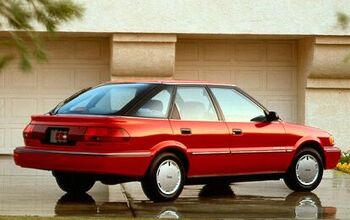
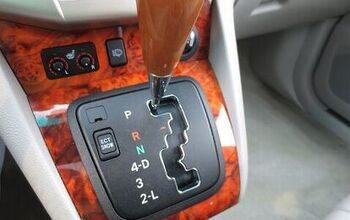
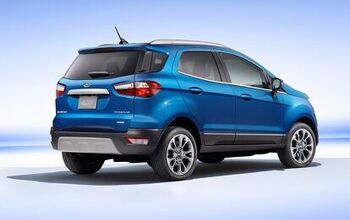
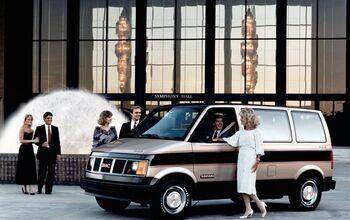


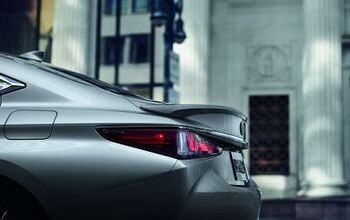







Comments
Join the conversation
I love a Saabaru!
Pretty much everything from the Italian half of FCA. Particularly Maser-rotten